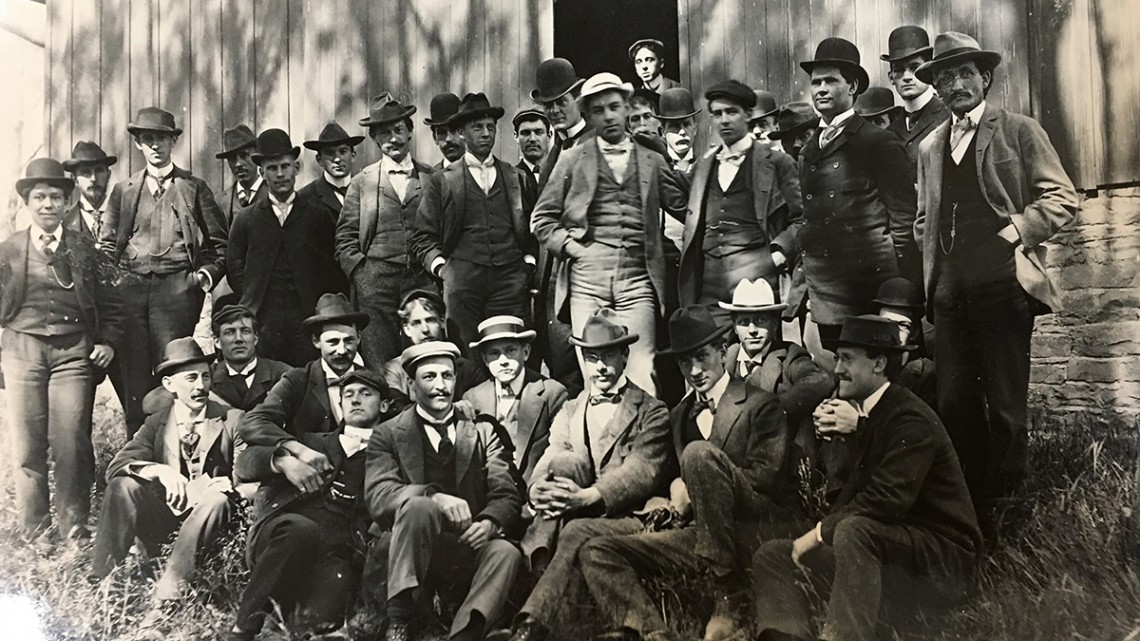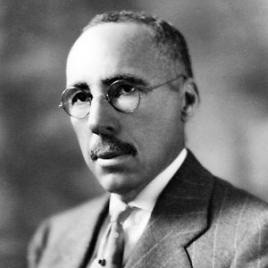
A group photo of the Horticultural Lazy Club, informally known as “Bailey’s Boys” in the late 1890s. David Willston, standing fourth from left, was the first African-American student to join the club, organized by Liberty Hyde Bailey, far right.
First African-American landscape architect launched career at Cornell
By Lori Sonken
The nation’s first African-American landscape architect, David A. Williston, got his start at Cornell in 1896.
One of the first universities to open its doors to black men and women, Cornell embraced Williston, who came to study under Liberty Hyde Bailey. Bailey, chair of the Department of Horticulture, built a curriculum in horticulture, landscape gardening and landscape art before becoming the first dean of the College of Agriculture.
At a time when segregation was rampant across the country, Williston joined the all-white Horticultural Lazy Club founded by Bailey to develop camaraderie among the students and to advise them. The club met monthly first in greenhouses where Hoy Field is and later in Bailey’s home on Sage Place near where Cornell University Press is now located.
Williston reportedly never missed a club meeting. He wrote his senior thesis on atmospheric drainage, discussing climatology, agricultural chemistry and meteorology. Williston credited Bailey for mentoring. He graduated from Cornell with a B.S. in agriculture in 1898.
“Williston was able to attend Cornell and graduate with his desired major at a time when ‘separate but equal’ was being established throughout the South,” said Daniel Wayne Krall, professor emeritus in the Department of Landscape Architecture. “Even in the North, there were many institutions where blacks were certainly not welcome.”
Before arriving at Cornell, Williston attended Howard University Normal School. It was there three decades earlier that Ezra Cornell famously wrote to a father whose son wanted to matriculate to Cornell, “Send him over if he is smart and can make his mark in the world.”
Williston soon proved that he was capable of leaving a lasting impression, particularly on landscapes in the South.
He taught at several historically black colleges, including Tuskegee Institute, now Tuskegee University. There he played a key role in creating Tuskegee’s master plan and selecting the plantings.
Williston was the project landscape architect and site engineer on the 99th Pursuit Squadron Training School and Air Field in Chehaw, Alabama, the pilot training grounds for the first flying unit of African-Americans, nicknamed the Tuskegee Airmen.
In 1930, he moved to Washington, D.C., to open the first African-American-owned landscape architecture firm. He designed Langston Terrace, one of the earliest public housing projects that was important for the passage of the National Housing Act of 1937.
Williston was the only African-American teaching horticulture and principles of site planning in the U.S. He taught for almost 30 years and was a consultant to black institutions for about 60 years. He died in 1964 at the age of 94.
Lori Sonken is the program coordinator for the Office of Faculty Development and Diversity.
Media Contact
Get Cornell news delivered right to your inbox.
Subscribe


